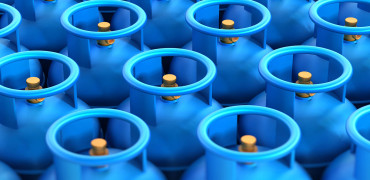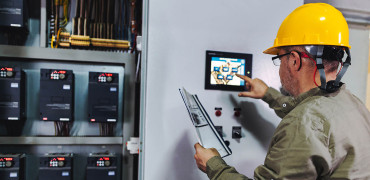James McKoen explains why the UK restaurant sector is embracing sustainability and how HVAC systems can support the move to energy efficiency
Many of the UK’s leading restaurant brands have committed to achieving net zero carbon emissions. For example, members of the industry’s Zero Carbon Forum include well-known brands from JD Wetherspoon to McDonalds and Pret a Manger.
There’s a lot driving the industry’s environmental concerns. Rising energy costs, increasing regulations, and changing consumer expectations mean restaurant brands must tackle some tough environmental challenges – from food sourcing to waste management and not least, carbon emissions.
Some of the largest contributors to restaurant carbon emissions are heating, ventilation and air conditioning (HVAC) systems. Cooling, heating and hot water are all essential for restaurant operation as well as customer comfort so optimising these systems while cutting carbon is a big ask.
Replacing older HVAC systems can significantly reduce energy consumption
A demanding environment
From the other side of the equation, restaurants present challenges for HVAC systems.
Unlike office buildings, for example, which experience relatively stable heating and cooling demands, restaurants require constant airflow management, heat extraction from kitchens, and precise temperature control for storage and dining areas.
Perhaps one of the biggest barriers to retrofits is the potential for disruption. Unlike new-build projects, retrofitting an existing restaurant’s HVAC system must be carefully managed to avoid downtime, loss of revenue, and operational complexity.
However, retrofitting older HVAC systems with modern, energy-efficient equipment, restaurants can significantly reduce energy consumption, lower costs, and enhance sustainability so it’s worth considering.
Keeping the pipework
Fortunately, modern HVAC retrofit solutions can address many of the challenges, while delivering significant improvements in system performance. For example, the Mitsubishi Electric R32 Replace reuses existing pipework in split air conditioning systems while upgrading to more efficient indoor and outdoor units.
The Replace approach significantly reduces installation time and costs, making it an attractive option for restaurant projects of all sizes (and their landlords) aiming to reduce down-time and disruption.
Modern equipment is not only more energy efficient, but the R32 refrigerant has a lower GWP of just 675, which compares very favourably to R410A (GWP 2088).
Free cooling
Another opportunity to enhance the indoor environment and save energy is by using free cooling. Mitsubishi Electric’s Lossnay ventilation units can operate alongside split air conditioning systems to remove stale air and introduce fresh air. This system was used by J D Wetherspoon in their Newquay pub restaurant, The Cribbar.
Lossnay’s core technology is a paper heat exchanger that allows incoming fresh air and extracted warm air to cross. Heat energy and moisture are recovered from expelled air and used to warm incoming air.
This reduces drafts in the occupied spaces – and can even provide ‘free cooling’ in spring and summer evenings, when the outdoor temperature is lower outdoors than inside.
35% reduction
There are also solutions for restaurants that want to upgrade to low-carbon HVAC solutions on a larger scale. One example is Mitsubishi Electric’s work with McDonalds restaurants. This project across almost 250 McDonalds outlets saw the replacement of traditional or gas-fired rooftop HVAC packages with a combined air handling unit (AHU) and Mitsubishi Electric air source heat pump system. The result was an average 35% reduction in energy consumption for each restaurant.
Upgrading to modern HVAC systems can also be supported with smart controls that help to ensure the system is always optimised. Today’s controls can be used to set up easy-to-use timing schedules to avoid energy waste. It can also provide monitoring to check on equipment performance – making it easy to spot any potential issues before they become breakdowns.
Although the thought of retrofitting new HVAC technologies in a working restaurant may seem daunting, today’s technologies can really help to make the process easier. The energy and carbon savings can be significant, particularly as we are seeing commercial energy costs rising year-on-year.
Mitsubishi Electric has worked with many leading brands in the restaurant industry, and our expertise can help to identify the best solutions for your project. Our expert installers can also ensure the project is delivered successfully, with outcomes that benefit your business and the environment.
James McKoen is Business Development Manager




